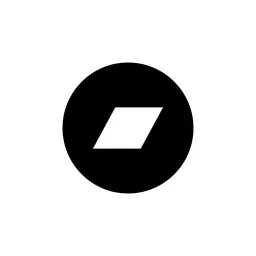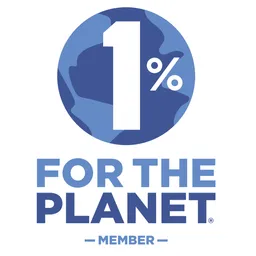This is part of a series of guest-post tutorials from Noise Engineering users showing off various tips for NE modules, modular use in general, or how they integrate modular into their workflow.
Have someone you think would be great to write a guest post? Have a modular tip you want to submit for us to create a video around? Please submit ideas for this occasional column here.
This week, I got to talk to techno and deep house artist Trovarsi. I met Trovarsi a few short years ago when she was new to modular and ran into her recently at a demo. The music she’s doing these days incorporates modular into really killer beats and other parts of her work flow and I was ecstatic when she agreed to talk to us about how she uses modular.
Kris: Who are you and what do you do?
Trovarsi: I am a Los Angeles-based musician, producer and performer. I perform and produce under the name Trovarsi and I also perform in an electronic music duo called Forward. I produce mainly techno and deep house music. I use Ableton, modular and incorporate various pieces of hardware in production in my live performances as well. When I perform live, I use a hybrid setup that varies depending on the type of show I want to play. It allows me be to be creative and experiment with the technology.
Recently, I became an instructor at Music Vault Academy. I teach with another electronic producer Brad Nelson - producer name RISC. Together, we teach Ableton, incorporated with hardware & traditional instruments - live performance techniques. I truly love helping and teaching people and I'm certain that I wouldn't know what I do today if it weren't for help from other artists. To pay it forward, I believe in helping people in their musical process as well.
[Ed. note: this is a good place to plug Trovarsi’s upcoming free Ableton workshop at the Music Vault Academy. Check it out Oct 20 3-5 PM if you’re in the Orange County area.]
K: Awesome! Your artist name is unique. Can you talk a bit about what it means?
Trovarsi: I have produced under other monikers, but the one that I decided to really own is Trovarsi. Part of my heritage is from Sicily. My family and our background has always been very important and influential to me throughout my life. The word trovarsi is from Italian and is a conjugation of the word trovare, which means -- to find. Trovarsi means -- to find oneself. I feel it best describes my journey with music and life. Whether people think my music is "good or bad," I create what I want to create with no regrets. I'm always changing, growing and discovering new ways to make music. For me, part of the fun in making music and learning new things is discovering and uncovering who you really are and exposing yourself to people for the enjoyment or judgment of your music, or whatever art you are creating. I think that's where you find out what kind of person you are. It took a lot soul searching to find this place and be ok with it, so I kept the name. To find oneself - Trovarsi.
K: Beautiful. I think it is my favorite story for an artist name I’ve heard. Changing gears a little, tell me how you started using modular.
Trovarsi: Through the years I had heard of Eurorack but I didn't realize how accessible it was to me. I loved the various sounds. From nice and soothing to gritty and dirty, I loved it! The gritty and dirty sounds are what got me! I started to seriously inquire about it about 3 1/2 years ago. I started reading and watching videos, and some of my first questions were answered at Noise Engineering booth at NAMM 2016. That was a great experience, you and Stephen were really friendly and approachable. I learned about other companies that were open to answer questions as well. I found the modular community pretty friendly and approachable. I did some additional digging and asked other artists a ton of questions before I even made my first purchase. I heard it was a slippery slope. Lol! That was not a lie!
My first purchase was the Make Noise 0-Coast and then the Dreadbox Hades DIY. Both had midi so that worked well for me since I mainly used Ableton and hardware drum machines at the time. Shortly after that I got a Pittsburgh Modular case and filled it quickly. Some of my first modules that went into it were the Noise Engineering Basimilus Iteritas Alter; the Tiptop 909 and Clap; the 2hp Hat; and the Malekko Varigate 8+ and Voltage Block. I quickly picked up other various percussive modules. Percussion with modular was my main focus and still is. I love doing modular builds as well. I went to Moogfest to build their new Subharmonicon. My friend Abe and I started a meetup group in Orange County called Southern California Synth Society. It's a great place to post questions about modular and other hardware. We also have meetups where we do things like jams and discussions. The first meetup was just a jam and everyone brought gear- Sort of a get to know people session. The second one was a DIY build session. The idea is to provide a space to relax and do a build where, you can ask questions and/or see what others are building. Everyone has various amounts of experience. More importantly, its a place to learn something and have fun doing it. I think overall I love modular not only for the amazing sounds, and the love of putting things together, but also for the relationships and sense of community I get with other people involved with it. I heard someone say that, "modular is like Legos for adults." I think that's a great way to put it.
K: I love that! I agree, I’ve found the modular community generally pretty welcoming — and I’m so happy you found us at NAMM that year. Let’s hear some music!
Trovarsi: This video snippet shows part of our process in figuring out the structure of the track
K: Tell me about the track!
Trovarsi: I built this setup to work on a collaboration EP and performance with RISC. I am big into using hybrid setups so we are using Ableton and the Digitakt in conjunction with my modular setup. I have all the modules going into the Polyend Poly (for midi to cv). I am sending midi from my Elektron Digitakt to sequence all the modules. We are using the following modules: 2hp Kick as the main kick. 2hp Snare. The 2hp Pluck; which is routed into the Red Panda Particle pedal for some background granular texture. Just enough to give it a gritty raw sound to the track. The Basimilus Iteritas Alter (BIA); which is routed into the Three Sisters filter and additionally using the LFO on the Digitakt to modulate the pitch on the BIA for the arcade like stabs. The Manis Iteritas (MI); which is patched straight into the 2hp Arp for a bit crush sort of ticking sound to add texture to the kick. The same sequence pattern from the Digitakt to sequence the BIA is being used to sequence the Arturia Mini V3 in Ableton. I have all the modules audio going into the Befaco Hexmix; which is a six channel mixer. I love this thing! The EQs and mutes make performance way easier for me. I am using the ES8 Expert Sleepers as my audio interface. I have the the HexMix routed into one audio channel in Ableton. The Digitakt has 8 audio channels. The Hi Hats are coming from the Digitakt. I am routing that into a second audio channel in Ableton, and the Mini V3 on a third channel. All together 3 channels routed into Ableton. I built and added different effects on each channel as well, filter, delay, etc. This way we can record in volume and various effects automation to keep the dynamics of the sounds changing. We record everything live into Ableton. First we talk out the structure and flow. Then we figure out who is going to manage which parts. Then from there hit record and together just play the song as a "live set" approach. We do it a couple times to see which one has the better vibe. Then it gets bounced out and RISC mixes & masters it.
One of the many reasons why I enjoy using hybrid setups is the flexibility I have and the growth I get from changing things up. I've used the Octatrack as well. The module Dubdelca is great with it. I also have the Vermona random Rhythm, which is great when I don't want to use the Digitakt or Poly. The Arturia BeatStep Pro is amazing for sequencing as well.
Find more about Trovarsi in the usual places:
and at






